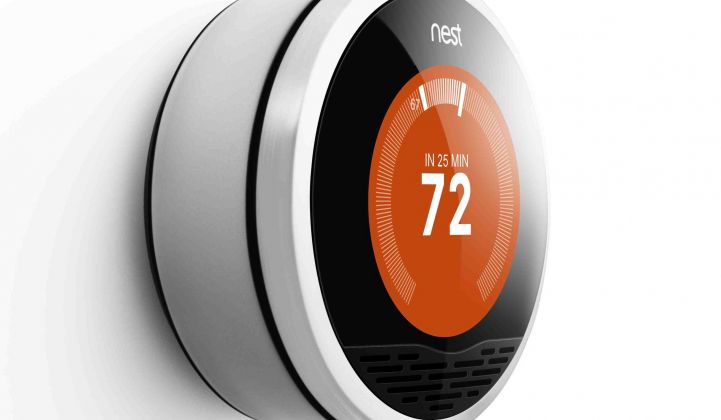According to the Nest Labs website:
The demand was huge from day one and the orders haven’t slowed down. We’re sold out through early next year and have closed our nest.com store until then.
Kudos to GigaOm for this find.
In May 2010, the Nest Labs team raised somewhere in the vicinity of $50 million to $80 million from Kleiner Perkins, Google Ventures, Shasta Ventures, Al Gore's Generation Investment Management, Lightspeed Venture Partners, and Intertrust to build a better thermostat.
Matt Rogers, the founder and VP of Engineering, managed the iPod software team. Tony Fadell, the CEO and founder of Nest, is referred to as the father of the iPhone. Erik Charlton was in charge of pointing devices at Logitech. They are world-class, badass industrial designers with pedigrees from Google, Apple, Microsoft, Tellme, and General Magic.
And in the words of Rogers, "We wanted to use our skills for good."
Fadell was building a green house and when confronted with the thermostats available in a full range of beige tones, he thought something better could be done in the thermostat space. He and the founders felt that people were used to better device experiences than that provided by the builder's standard "Honeywell Round" model.
There are a lot of home energy dashboard firms like Tendril, Energy Hub or Control4.
Nest is not an energy dashboard firm. The firm is not a home energy network company.
Nest builds thermostats. Beautiful, smart and expensive thermostats.
Home energy usage is a significant piece of this nation's energy bill and HVAC accounts for about half of the typical home's usage. EcoFactor figured this out a long time ago. According to Rogers, "Honeywell is not doing enough; we could do much better." He added, "It's a very important problem and worth assembling one of the best teams" to tackle it.
Nest looked to assemble "the best designers in The Valley." They started of by asking questions like, "How do we make this an object of desire?" and "How do we make this an engaging experience?" The team addressed how the device was bought, packaged, installed, and set up. And it turned out to be challenging: while the iPod took six months to get to market, it took the 100-strong Nest team 18 months to introduce their device, which starts shipping to consumers in the middle of next month.
According to Rogers, the device does not need to be programmed; you set it when you remember to do so. It can optionally get the outside temperature via Wi-Fi. There is a near-field proximity sensor that turns the unit on as you approach, as well as a far-field motion detector that turns down temperatures if the device doesn't detect your presence for two hours. Algorithms provide "a good idea of home occupancy."
There are temperature sensors, humidity sensors, and ambient light sensors. Power comes over existing thermostat wires, which makes it compatible with 85 percent to 90 percent of American homes.
The team wanted to make the product beautiful but unobtrusive. It's fair to say that the team succeeded -- the thermostat is a sleek piece of design that clearly betrays its Apple roots.
However, there won't be a Nest Store just yet. The product will be sold online, through Best Buy, and via Watsco, the nation's largest distributor of heating and air conditioning equipment. Customers can preorder the unit for $249 and install it themselves or pay an additional $119 for the Nest Concierge service that provides for installation. By means of comparison, conventional, non-beautiful programmable thermostats typically sell for $40 to $100.
Nest has performed a 200-home national trial in a variety of climates.
We'll update the sales numbers if the company shares that information.
_547_492_80.jpg)



